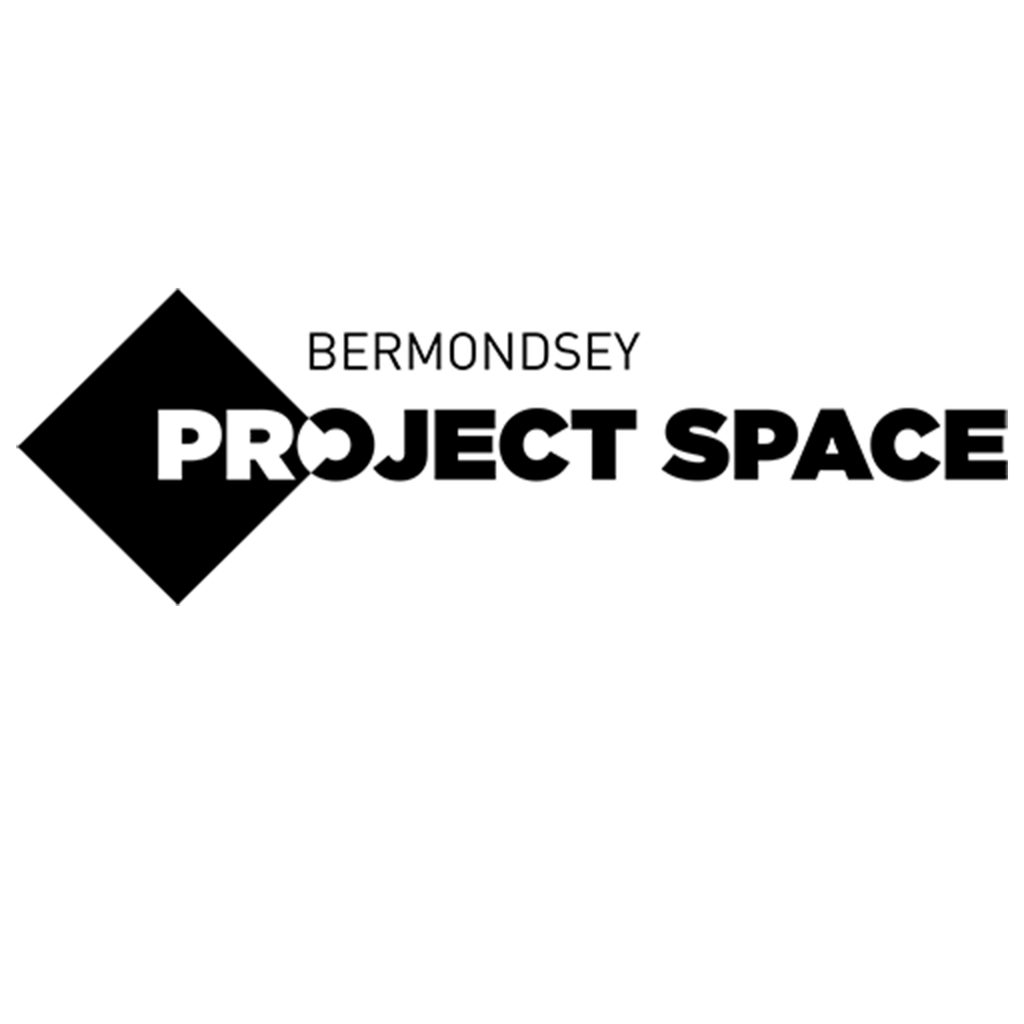28 January – 8 February 2020
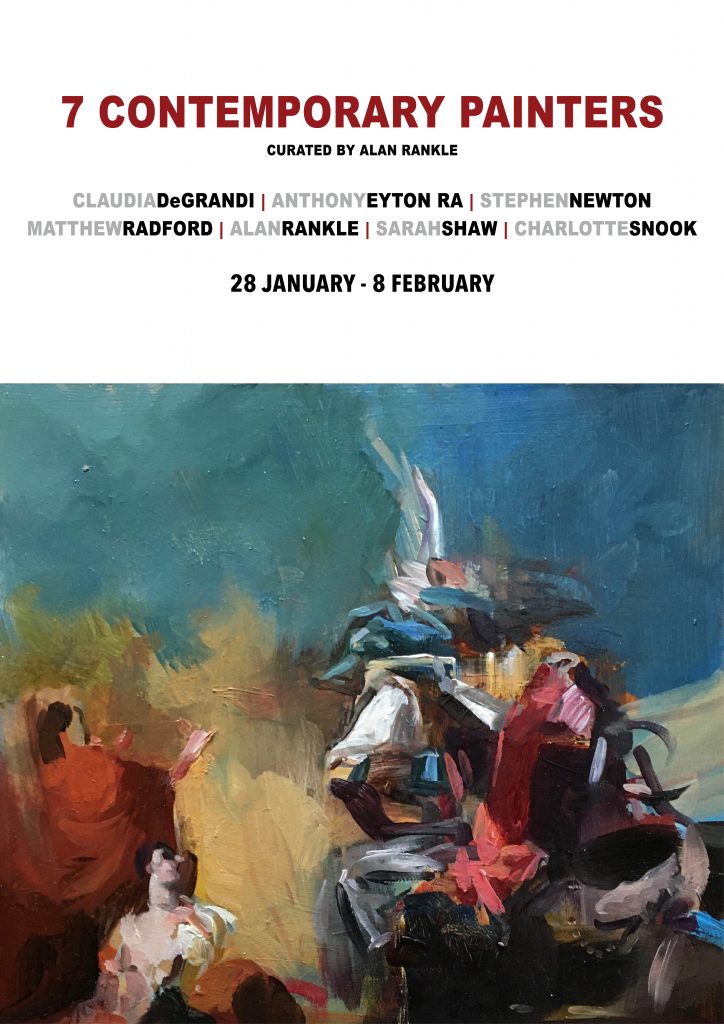
The artists in the exhibition while clearly Contemporary, and often groundbreaking in terms of approaches to their subjects and painterly techniques, are also artists who are unafraid of referencing, and in some cases quoting iconic historical art.
While these seven painters each employ intensely personal and idiosyncratic means towards creating their works, they all have in common a high regard for painting as an art.
They are capable of extending the dialogue of painting in new and sometimes radical ways while at the same time revealing the strong threads of tradition which entwine as well as embroider the tapestry of painting as an evolving language.
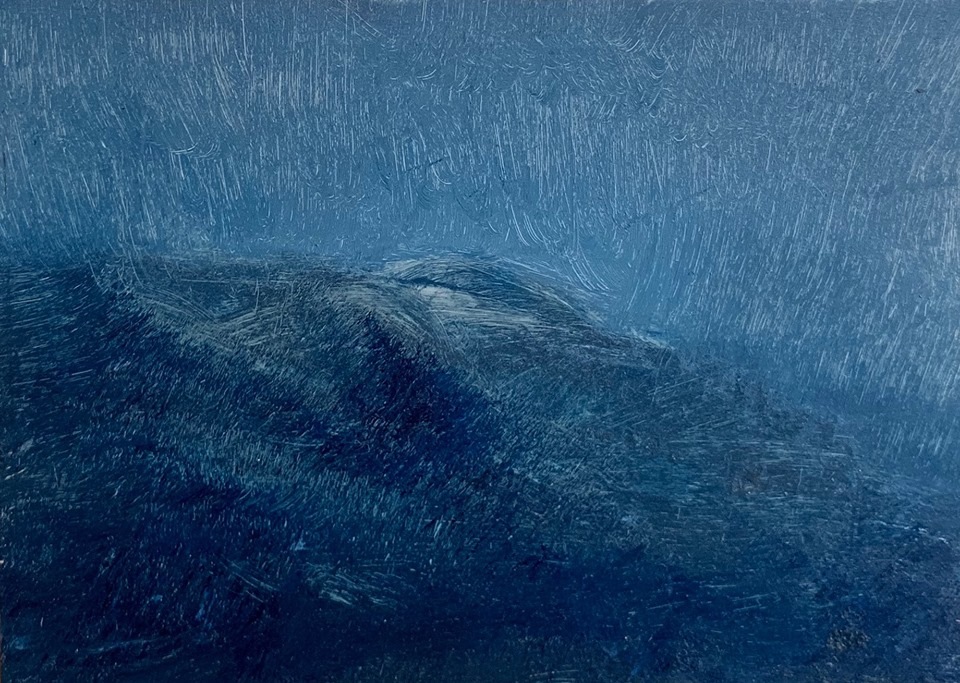
Claudia De Grandi
Born in São Paulo, Brazil, Claudia De Grandi is an artist working variously in painting, photography, printmaking and video installation. Classically trained at the piano she first realised music could be an abstraction, and it remains her inspirational undercurrent.
On moving to England she studied fine art and gained a Masters degree in Transnational Art at the University of the Arts, London. Known initially for creating Visual Sounds Project – a series of collaborative performance with musician Joshua Tennent – she has recently concentrated on large scale paintings based on her observations of the sea.
De Grandi’s works are increasingly attracting art world and press attention with her works finding collectors in New York, Milan, Tokyo and London. At the same time following her original academic pursuits, Claudia recently co-curated the exhibition Axis: London Milano with Alan Rankle at Fabbrica Del Vapore, Milan, Italy.
She lives and works in the East Sussex countryside.
These new paintings Waves & Horizons are based on her observations and photographs of the Pacific Ocean and closer to home the steel grey waters of the English Channel near to her Hastings studio. They make sublime images, referencing Turner and Whistler while at the same time revisiting historical Colour Field Abstraction. Her paintings work equally well as depictions of light and movement yet also pervasively draw the viewer into the abstract. In a noticeably filmic way, these recent paintings evoke the darkly threatening waters of a psychological thriller, you can sense a disturbing, metronomic soundtrack hinting at deep waters and danger below the shimmering surface. These themes precipitate De Grandi’s vision for the evolving work as an immersive installation of painting and music. This exhibition, curated by Alan Rankle, is her London debut and gives an intimate insight into the development of her project.
De Grandi makes her art with well defined and far reaching objectives:
“When I am painting the action of creating connects me to a greater moment of happening – it is the What and the only thing happening at that moment.
Reality is a mystery. When trying to paint it you then realize it’s impossible. It can only be painted as it is immediately seen, in front of you, and then modified by the feeling that it transmits.”
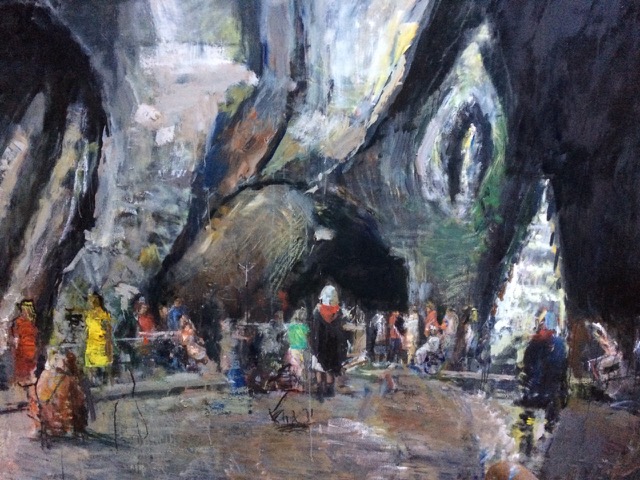
Anthony Eyton RA
Anthony Eyton is a classic figurative painter working in what could be termed the post-Impressionist tradition. A major figure in the development of British painting, he has exhibited extensively throughout Britain at leading galleries such as the Royal Academy, the Tate Gallery, the South London Gallery, the Hayward Gallery and the Imperial War Museum. He has won many awards, including the John Moores Prize in 1972. He was elected an Associate Royal Academician (A.R.A) in 1976, a full member in 1986 and a Senior R.A. in 1998. Among his many significant commissions was the 1994 invitation by the Tate Gallery to work in the Bankside Power Station prior to it becoming Tate Modern. Based in London, he has continued to work and exhibit into his eighties. Examples of Eyton’s painting are held in major public and private collections throughout the world.
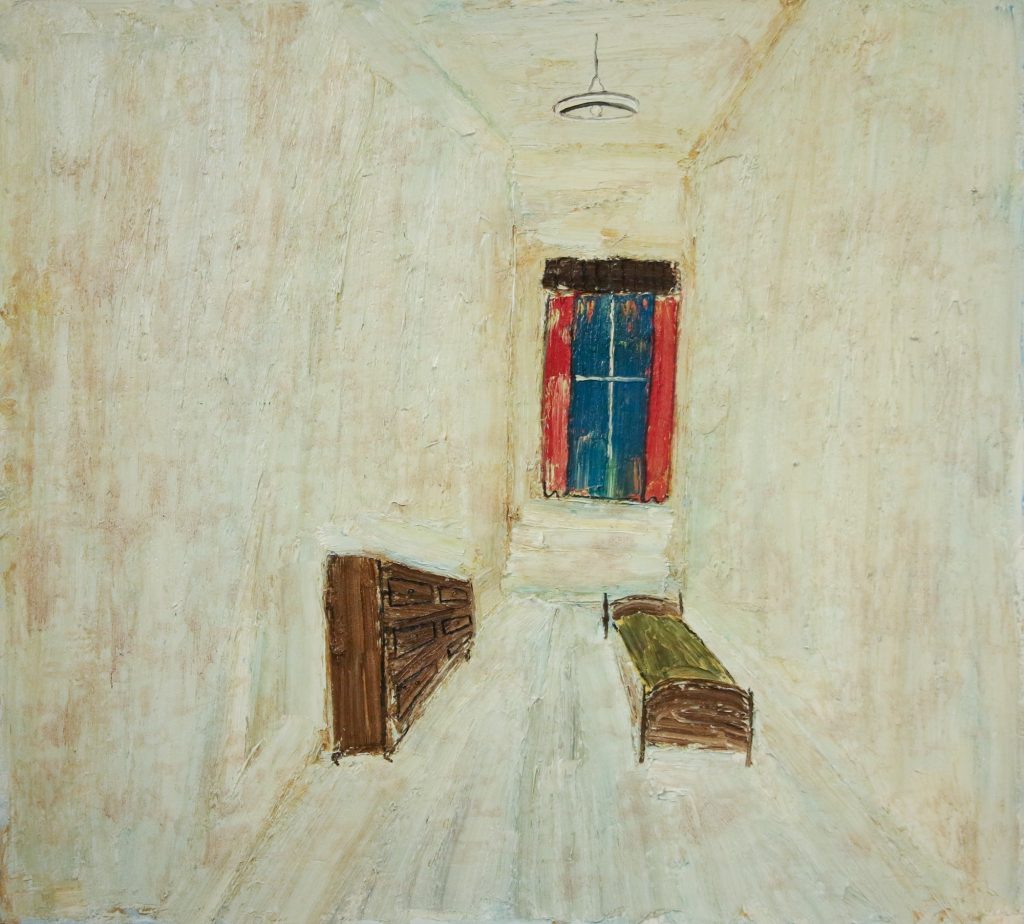
Stephen Newton
Stephen Newton was born in Grimsby in 1948. He received a BA at Leeds University in 1971, M.A. Fine Art at Nottingham Trent University, 1986, M.A. Art and Psychotherapy (distinction) University of Sheffield, 1993, and a Ph.D in the psychoanalysis of the creative process , Dept. Of Psychiatry, University of Sheffield, 1998.
The critic Mel Gooding described his work as a ‘psycho-conceptual project’.
A review in Diva publications described Newton’s Imagery as imbued ‘with a inherently disturbing, almost eerie, atmosphere and Feeling’, whilst the editor of State magazine, Mike Von Joel, wrote that his work offers ‘radically Distilled imagery, simple – even childlike iconographies represent a far more primeval Creative force that stir (often uncontrollable) sensations of recognition in those that Take the time to consider and reflect on them’.Stephen Newton is widely acclaimed for both his art and writing Whilst viewing the work of Stephen Newton, scenes of solitude and isolation cast the mind into contemplation of the human condition and eternity. However, Stephen Newton feels that his work is “an expression” and that it doesn’t stem from a set idea. “My paintings never refer to a specific place that could actually be located somewhere. They don’t have any narrative or symbolism or anything to do with dreams or memories, or other agendas of any sort.” His attitude towards his work is clear, as it is not just an extension of him, but something bigger.
Stephen has exhibited extensively throughout Europe, America and the UK. The latest acquisition of his work is Room with a View of Cliffs, now housed at the Madison Museum of Fine Art, America. He has also been described by the New York critic and philosopher Donald Kuspit as “one of the best painters painting in the world today.” In addition to being a national and international acclaimed artist, he is a highly commended author with a distinguished academic career.
Newton’s paintings have been acquired by Abbot Hall Art Gallery, The East Contemporary Art Collection, UCS; Madison Museum of Fine Art; Priseman Seabrook Collection; Rugby Art Gallery and Museum and Swindon Art Gallery.
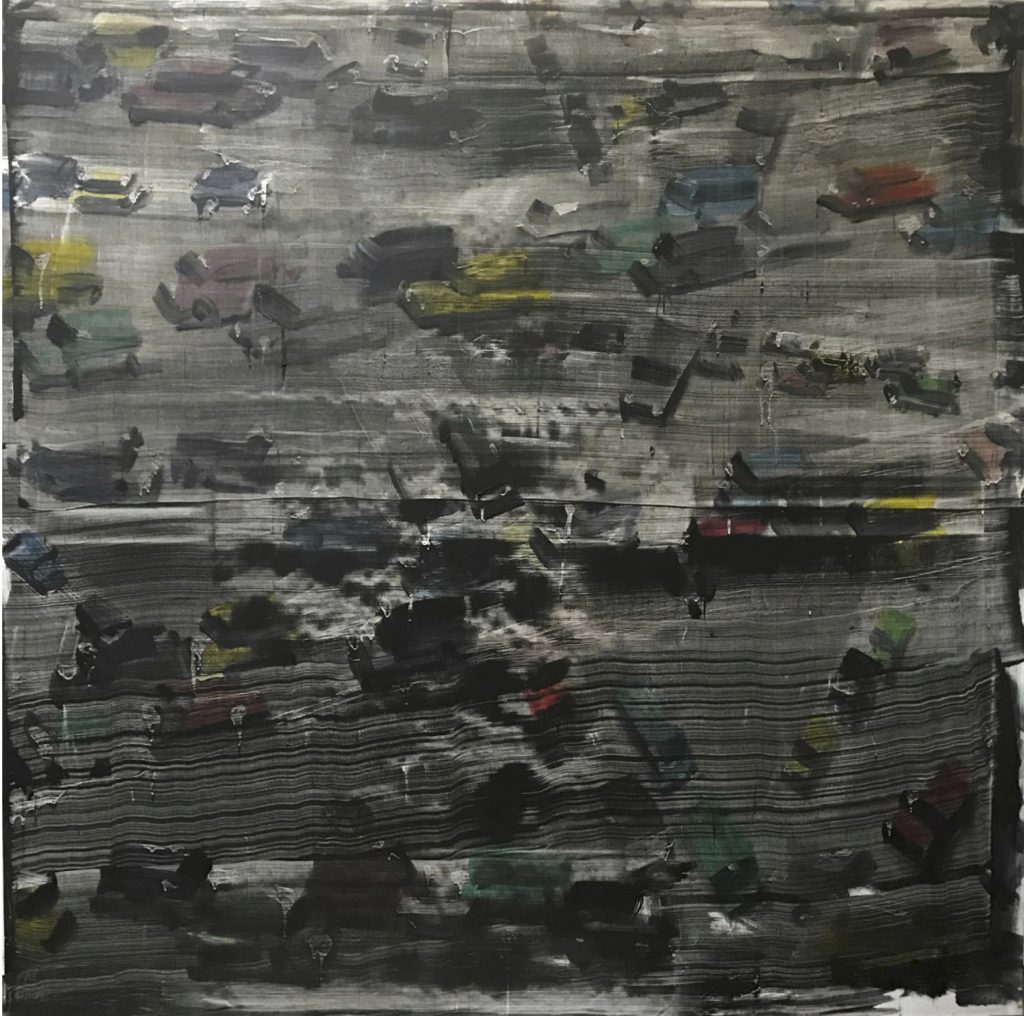
Matthew Radford
Matthew Radford studied at St Albans School of Art, and Camberwell School of Art. And has taught variously in London and New York. He is represented in collections worldwide.
In an essay on the artist’s work novelist Peter Ackroyd states ‘When you enter a painting by Matthew Radford you are introduced to a world of arrested movement, of stillness and silence and slow time. Yet this sense of stasis is in fact an illusion; the more you observe the canvas the more you understand the play of light and shadow underlying the ceaseless flux of the city. Radford is pre-eminently an urban artist bewildered and entranced by the energetic life of the city all around him. Some of his work might bring to mind J.P Chaplin’s Rumour, Fear and the Madness of Crowds but Radford’s unflinching attention is directed towards the solitariness and mystery of the individuals that make up the aggregate of the urban community.
In that context the artist also invokes some characteristic aspects of a city that is built within the shadows of money and of power; his is a London vision. As in some of his earlier work he is entranced by the scenic and the spectacular as they are expressed in the continual and energetic display of people. Like previous London artists he understands the variety of the city and he also comprehends its darkness. He is concerned with the external life, with the movement of crowds and with the great general drama of the human spirit. He has a sense of energy and splendour, of ritual and display, which has very little to do with moral judgment or ethical consciousness. Radford actively excludes meaning. He shares the sublime indifference of the city itself, where the multitudes come and go.
When you come close to the canvas the brush strokes seem almost abstract in their intensity; it is only when you step backwards that the world becomes recognisable again. It is this sense of strangeness and familiarity, of unsettling proximity and formal observation, that captures the actual sensation of living and walking in the city. It resembles the effect of certain children’s books, where water smeared across the page will elicit an image apparently rising miraculously to the surface. Radford’s images have that effortless spontaneity, but one charged with mystery and transience. They appear almost impersonally, without a willed intent or purpose’.
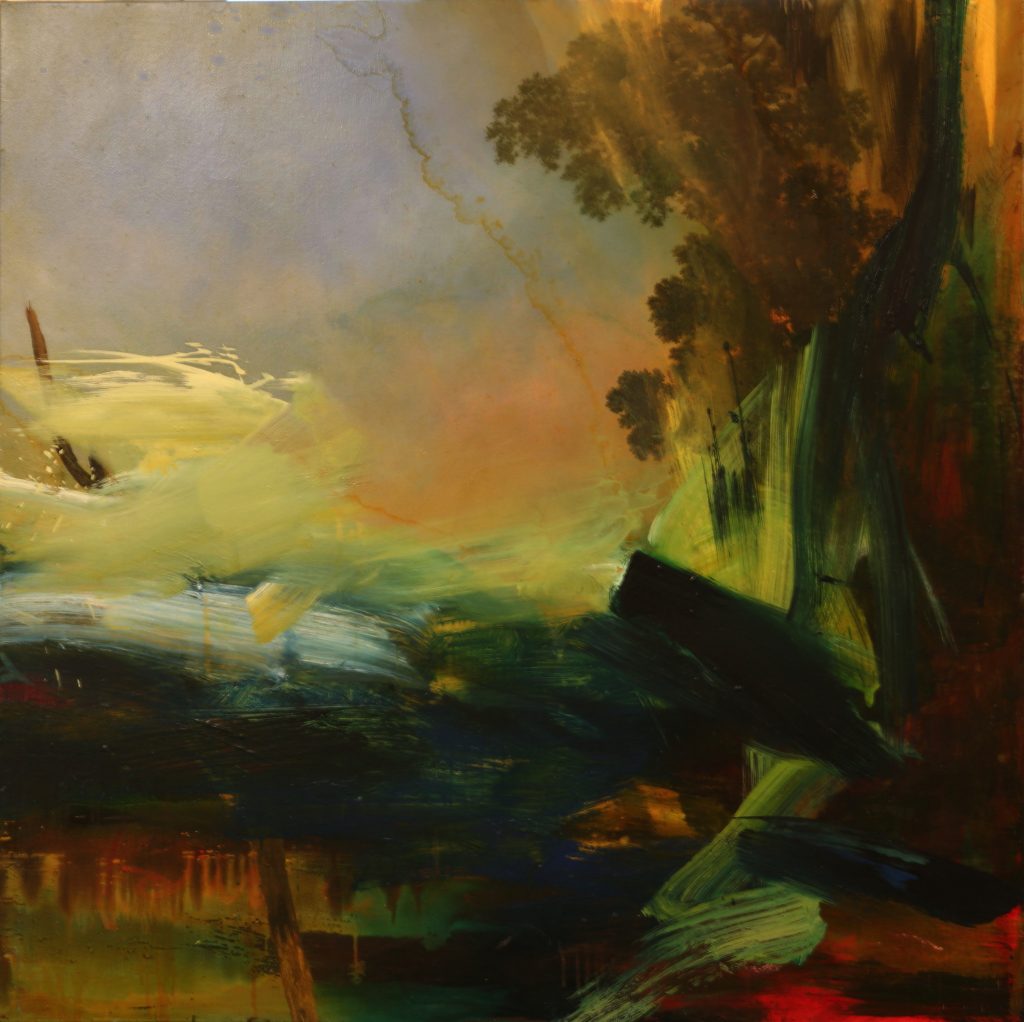
Alan Rankle
Alan Rankle, was born in Oldham, Lancashire, England in 1952 he studied at Rochdale School of Art and Goldsmiths’ College, University of London. He works variously in painting, printmaking, photography as well as collaborating on curating and architectural projects.
Looking to the past in order to paint the future. Rankle continues his preoccupation with revitalizing the tradition of landscape art within the context of our post-industrial, and arguably pre-apocalyptic, world. In recent works Rankle seems to treat the whole history of landscape painting as a “found object.” He fuses aspects of Classical and Romantic painting with Abstract Expressionistic gestures; he paints trompe l’oeil elements as though from a 19th Century naturalist’s journal. He knowingly references conceptual asides to provide an undercurrent of contemporary unease.
Rankle’s work is increasingly highly regarded and a series of high profile solo exhibitions in Copenhagen, Berlin, Milan and London have confirmed his status as one of the most innovative painters working today.
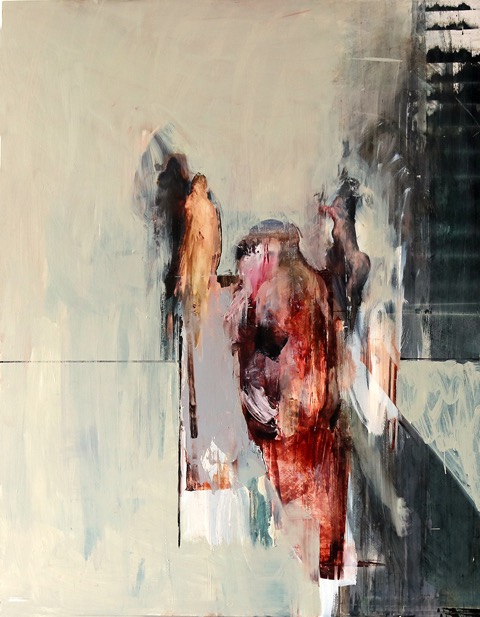
Sarah Shaw
Sarah Shaw graduated from Falmouth College of Art in 2001 with a 1st Class Honours BA Degree in Fine Art and now works from her studio in Brighton.Her work is purchased by private collectors in the UK and abroad and has been featured in many notable competitions and collections including the prestigious Aesthetica and Threadneedle Art prizes.
Sarah was awarded the University of Chichester’s Award for Fine Art in the Regional Awards within the National Open Art Competition, where she has also been artist in residence and won the British Women’s Artist prize in 2017.
Sarah creates paintings that elegantly hover between figuration and abstraction while striving to inject them with enough room for personal interpretation. Her artwork speaks of a belief in the enduring vitality of painting as a primary form of communication. Shaw describes her inspiration as deriving from a quiet, almost meditative place, explaining that her process seems to always revolve around the building up and stripping down of imagery, exploring different painterly languages then reducing down to the lowest denominator where an ‘edgy quietness’ falls. By editing specific works and ideas she strives to capture the sense of a moment in time. These snatches of images, sounds and thoughts form a balance which she describes as ‘a painterly slideshow of memory’.
Shaw’s paintings often explore themes of beauty, history, the passing of time and the brevity of life. The paintings exhibited in ‘7 Contemporary Painters’ present an unusual and sensual journey within light and shadow yet still reflect Shaw’s signature painterly explorations into all aspects of what it is to be a human being, in this time, with these thoughts, and in this skin.
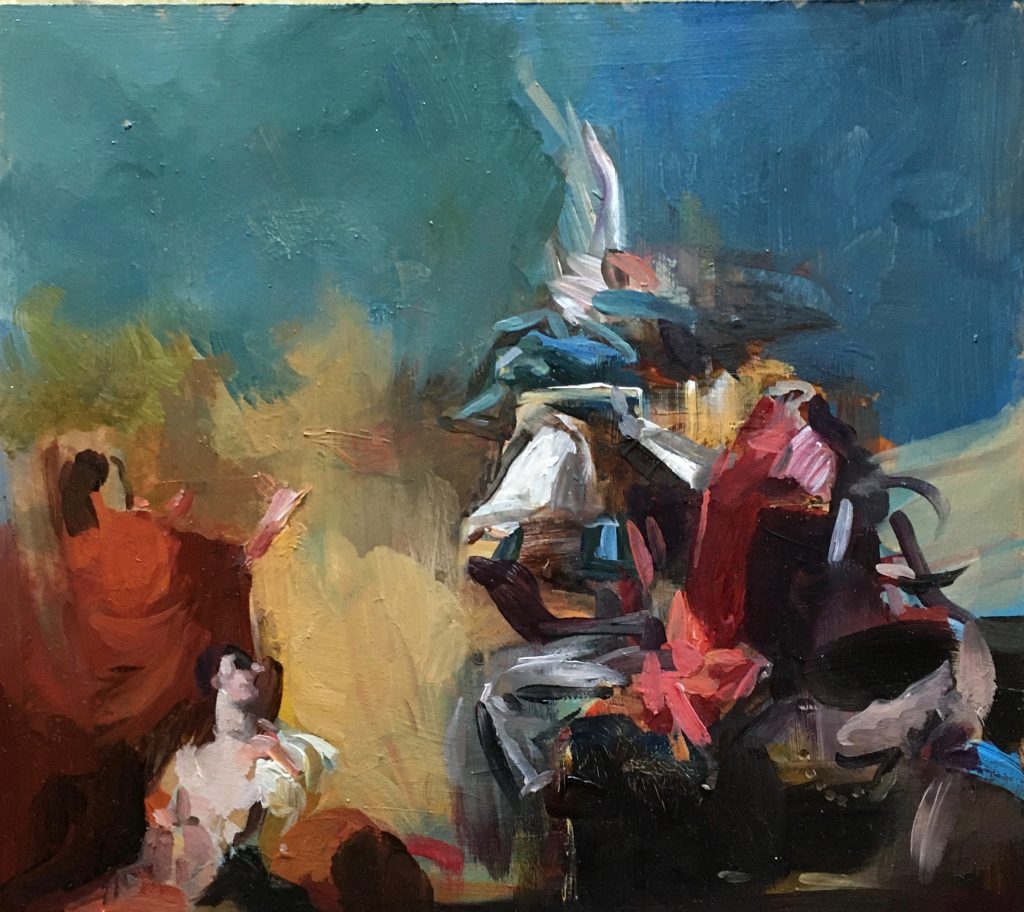
Charlotte Snook
Charlotte Snook was born in Middlesex and studied at Hornsey College of Art and the Royal College of Art where she received an MA in Painting.
Charlotte Snook combines her knowledge of art history and insight into human nature with a free-roaming imagination to create complex artworks. She takes Breugel, Poussin, Claude and 17th century Flemish art as a starting point for her paintings which can be as edgy as they are exquisite. Her art allows for the apocalyptic nature of the world. ‘They are concerned with a loss of paradise,’ Charlotte says. ‘It’s all about the painting: light, colour, contrast, the composition and brushstrokes. I try to set a narrative without there being one.
A selection of her recent exhibition of paintings and drawings reflects Charlotte’s packed and varied career: she was asked to respond to the permanent collection of Hastings Museum and drew on the pastoral porcelain figures as well as the faces of Christian missionaries gazing out from early 20th century photographs. She painted landscapes and studio scenes in Verrocchio, Italy. Her work was included in Axis: London Milano alongside artists including the Chapman Brothers. She was invited to exhibit at Jerwood Gallery, Hastings as part of To Be Continued exhibition. The show, presented by Sarah O’Kane Contemporary Fine Art, bring together both the imaginative and the observational aspects of Charlotte’s work.
Charlotte’s work has been included in the Jerwood Drawing Prize from 1995–99, the Hunting Prize and the Garrick/Milne Prize. Solo exhibitions include Rare Affairs at the Basement Gallery, Boise, Idaho (USA) and Hastings Museum and Art Gallery. Charlotte studied painting at Hornsey College of Art and the Royal College of Art. In her academic career she has taught part-time at art schools and universities throughout England, and from 2001–9 was Senior Lecturer in Visual Communication (Foundation) at Central Saint Martins.
